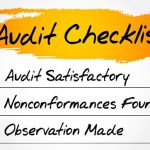The Australian Vocational Education and Training (VET) regulatory framework is dynamic. There are regular changes to standards, requirements and conditions. As a provider of training services, you need to stay up-to-date with these changes to ensure you continue to operate from a position of compliance. Here’s a breakdown of some key areas relating to compliance you should know about:
What you need to know about compliance.
There are many different terms used in the compliance and quality space:
Compliance
Is a legal requirement to meet regulatory requirements, industry standards and legislative requirements
Quality standards
These are what we expect to be achieved in our operations. For example, we might have a policy that all students must be issued qualifications within 30 days period after successfully demonstrating compliance and meeting all course, regulatory, and organisational requirements. This would be a quality standard because it provides clear guidance on how long qualifications should take to be issued.
How VET providers can set standards and meet regulatory requirements.
It is important for VET providers to be aware of the quality assurance requirements that they must meet in order to operate legally and ensure that their students are receiving a high-quality education.
VET providers can set standards and meet regulatory requirements by:
One way in which VET providers can set standards and meet regulatory requirements is by developing and implementing quality assurance processes. Quality assurance processes help to ensure that providers are delivering training that meets the needs of their students and the industry. In order to develop and implement quality assurance processes, providers need to have a good understanding of the Australian Quality Training Framework (AQTF). The AQTF is a set of quality standards that all VET providers must meet. Providers can use the AQTF to develop and implement quality assurance processes.
Another way in which VET providers can set standards and meet regulatory requirements is by developing partnerships with industry bodies. These partnerships can help to ensure that providers are delivering training that meets the needs of the industry. In order to develop partnerships with industry bodies, providers need to have a good understanding of the needs of industry. They also need to be able to build relationships with industry representatives.
It is also important to ensure staff are trained in compliance by completing appropriate courses in compliance and training and assessment and going through regular professional development training.
What to do if you’ve received a non-compliance notice.
If you’ve received a non-compliance notice, take it seriously. You may be able to resolve the issue by understanding the compliance gaps, fixing the non-compliance, and responding directly to the person or department mentioned on the notice. If not, seek legal advice or talk to RTO consultants as soon as possible.
Respond to the notice in writing within the time period specified on the notice, and demonstrate how have you corrected any nonconformities (as necessary). Make sure that all of your staff are aware of current laws and regulations affecting your organisation’s activities, especially if they’re located in different locations across Australia. Finally, make sure that these issues don’t happen again!
The difference between conditions on registration and sanctions.
Once you have registered your VET provider, you will be given a copy of the conditions on registration, if there are any on your RTO’s scope of registration. These are imposed by the regulator and outline what you must do to continue to operate as an accredited training organisation. They could include:
- meeting certain standards;
- acting in accordance with legislative requirements;
- not being able to enrol students or limiting the number of student enrolments;
- not able to operate operations/business till the review/appeal application completes
- having clear systems for managing complaints and reporting breaches or suspected breaches of the law;
- ensuring that only suitable staff are employed by the organisation;
- ensuring that all staff comply with Code of Professional Conduct and Ethics (CPCE).
What information needs to be included in an organisational risk assessment.
What is a risk assessment? A risk assessment is an evaluation of possible threats to a person, property or business and the actions that can be taken to minimise or eliminate them.
What is a risk assessment for? A risk assessment is an evaluation of possible threats to a person, property or business and the actions that can be taken to minimise or eliminate them.
What information needs to be included in an organisational risk assessment? The following information should be included:
The purpose of conducting the assessment (what you are trying to achieve).
A summary of how often your organisation conducts these types of assessments. This helps explain why this particular one has been completed now (and what has changed since your last one). For example, “We have conducted similar reviews every five years since 2015” or “As we have recently experienced several non-compliance across our organisation it has been decided that this review will now occur annually instead of every five years”.
Stay up-to-date with changes to the regulatory framework for VET.
You should read up on and stay up-to-date with the latest news and developments in the VET regulatory framework.
Irrespective of whether you working for a large or small organisation, it is important to make sure that your organisation is compliant with all relevant legal requirements as they apply to training organisations. To do this, you should have a plan in place to deal with non-compliance that includes:
- An internal audit process that reviews compliance with key regulatory requirements;
- Regular workshops for staff so they understand their roles and responsibilities, and
- Having an effective reporting system so that any non-compliant practices are identified quickly and dealt with effectively











